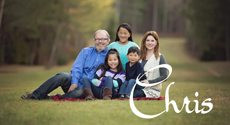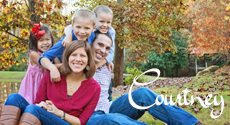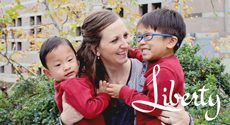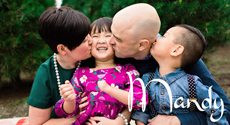I was thinking about parents in the adoption trenches today, those stuck down deep in the mud – you know who you are and this one’s for you. I have had a little time in the trenches, not nearly as much as some of you, but I know that when you are in the muddy pit of it all, you are just surviving. Just getting by. Doing good to prepare a meal and get a load of laundry done without feeling like your lungs are caving in.
I am not in the trenches right now but can easily recall being there, that there was so much I wanted to read or view about behavior and attachment and other adoption related topics. But in the trenches you are tired and weary and it gets put on the back burner. Put there not out of lack of desire, but a need to sleep or just feel normal when the house gets quiet. So, I am viewing a DVD series for you – over four hours long – and giving you the highlights by chapter so you can journey from there or know exactly what pit stop to visit quickly for a rest when you catch a spare moment to try to exhale.
TCU’s Institute of Child Development has a wonderful DVD series called Trust – Based Parenting: Creating Lasting Changes in Your Child’s Behavior. Dr. Purvis and Dr. Cross span many topics relating to behavior in “children from hard places.” The hurdles that these children must jump range from fear, pain, rage, sadness, violence, helplessness and hopelessness. It is an overwhelming set of hurdles for both parent and child. For those in the trenches and for those considering the possibility of jumping in…I hope this helps.
Chapter 1:
- Acknowledge your pain and disappointment – It is ok to grieve that your “gotcha moment” looked like trauma instead of a Hallmark card. That your evenings that were once spent with a routine of family dinners, bathtime and stories are now a war zone. It is ok that you love this child but don’t like this child at the moment. You can forgive yourself. This is not what you planned for or hoped for and to acknowledge your grief and loss is the first step to healing.
- Fresh eyes of empathy – It is very likely that most of the chaos in the behavior of your child had access and an entry point long before you ever signed your first document to bring him or her home. The trauma existed previously and it is the fear and pain of that trauma that drives the behavior. While terribly disappointing, this is the state of their existence. It is all these children have known.
- Neglect and abuse impair development – There is a change in the neurotransmitters responsible for sending chemical messages to the rest of the child’s body. Everything from physical response such as heartbeat, to mood, memory and coping mechanisms can be affected. The brain is altered in development and the neglect, abuse and abandonment can cripple the ability to grow and think clearly. When there is a lack of attachment in the very early years for a child, when that soft “sensory bath” that mothers and fathers give a child is missing, it can literally reorganize a nervous system. While that is overwhelming in and of itself, the good news is, it isn’t about bad behavior. When a small baby is not cared for, he can lose his voice – his cry doesn’t matter or produce results. The synaptic connections literally change and a child learns to fight, flight, manipulate, control or just plain check out.
- Control and manipulation are strategies to survive. Deep fear triggers a deep need for control. It isn’t about infuriating you. It is about safety.
- Traditional discipline can be counterproductive. New strategies are needed to coach and retrain.
- As parents we need to look with compassion and new eyes but still deal with the issues that cannot be ignored. The behavior has to change but we must look past the behavior into the child’s heart. When this happens, the emotional bond changes too.
Chapter 2:
- It is all about a power struggle. If the initial damage was done to the child in the context of relationship (or lack of relationship) then it must be healed in the context of relationship. That is based on trust. When a child is asked and taught to give up unhealthy strategies, trust is foundational to change.
- There is no quick fix. This is a marathon, not a sprint. There is a level of engagement beyond normal parenting. It is exhausting work. As parents we have to drop the idea that we “rescued” these children and it is smooth (and appreciative) sailing from then on. The rescuing was easy. The parenting is when it gets challenging. Lots and lots of repetition.
- As parents we must come to terms with our own history. Our ability to be emotionally present is the greatest predictor of the child’s outcome. We must honestly access our own history and unresolved issues so that our emotions are in check. We have to be thoughtful, deliberate and mindful. This is impossible when our own baggage has not been dealt with. We can become triggered and the chaos intensifies. “You can only take a child where you have been yourself.”
- Create a support system. Ask for help and ask from people who “get it.” Find those who will be compassionate and understanding. Love is not enough here – find those who understand adoption and attachment and everything in between. Do not stay closed up at home – healing cannot come in isolation.
I have two favorite parts of these two chapters. These are my thoughts now, not those of TCU’s Child Development Department – although they are rock stars in my opinion (Imagine Karen Purvis as a rock star – guitar slinging leather wearing as if she were the third member of Heart. No matter what kind of day you’ve had, it just got better!). It is a freeing thing to know that some of the issues that you may be in the pit with, are scientifically the result of damage. Neurotransmitter synaptic connector damage. And it can affect everything.
A disclaimer – I have a surgeon husband who can look inside the human body and say without doubt, “There is a God and He is good.” Design like that is extraordinary and certainly not accidental. I have a degree that spans fine art therapies for at risk children. I remember sitting through many lectures thinking, “That is God’s science – He should get credit.” OR, “That is a counterfeit way of doing things – it is better with God.” So, I am fascinated by the science of trauma and all of its intricacies in the brain. Equally fascinated with the truth that for every interrupted transmitter, there is a “science” in the hand of God to heal. It is how He works – He doesn’t leave his own without a way out, without a lamp to guide or a broad place to stand in when all they’ve known is “backed in the corner.” The truth that safe and loving attachment can “rewire” is a beautiful thing. It looks just like God – I remember what it felt to be distant from Him and how it feels up close now. It is Holy. It is His.
The holy healing isn’t just for our sweet ones who now have a forever family. I love that Dr. Purvis advocates for parental healing too. To know that my child can only go where I’ve been is a motivating statement. There are places to pursue healing – adoption counseling, trusted friends in real conversation over coffee and tears, and ministries devoted to this very act of healing from the inside out – there is hope and it’s a comfort to be reminded that it is available and does not disappoint.
So, if you’re in the trenches, I hope this reads like a little bit of light shining in a dark place. What would take hours to watch is now available in my cliff notes, just for you. I always feel guilty in the trenches – like I should be doing more to make it better or fix it. So check that box tonight that you did something proactive and peel off guilt and leave it in the trench as you take baby steps out. You are not alone.



























Excellent post! We waked through so much of this with our first son. Definitely a marathon but nearing our 5 year anniversary with him, we can look back now and see more clearly what his triggers are and how to help him. Thanks so much for sharing this. 🙂
Thank you Kam!
This was a great post and really gets to the heart of the whole experience. Thank you for sharing!
you are welcome – thanks for commenting!
This is awesome to read! We have been working on an adoption from Haiti of over 4-1/2 years. God is faithful and our little guy is almost home! He will be 6 next month. I have a 4-1/2 yr old and a 10 month old. We are soooooo excited to get him home but I must admit, I am nervous too!!!!!!
Samantha – I am so glad your little guy is almost home! Nervous and excited are a normal combo! I have several friends with beautiful Haiti children – congratulations and many blessings!
I’d love to be included on the distribution list for new posts. Thank you!